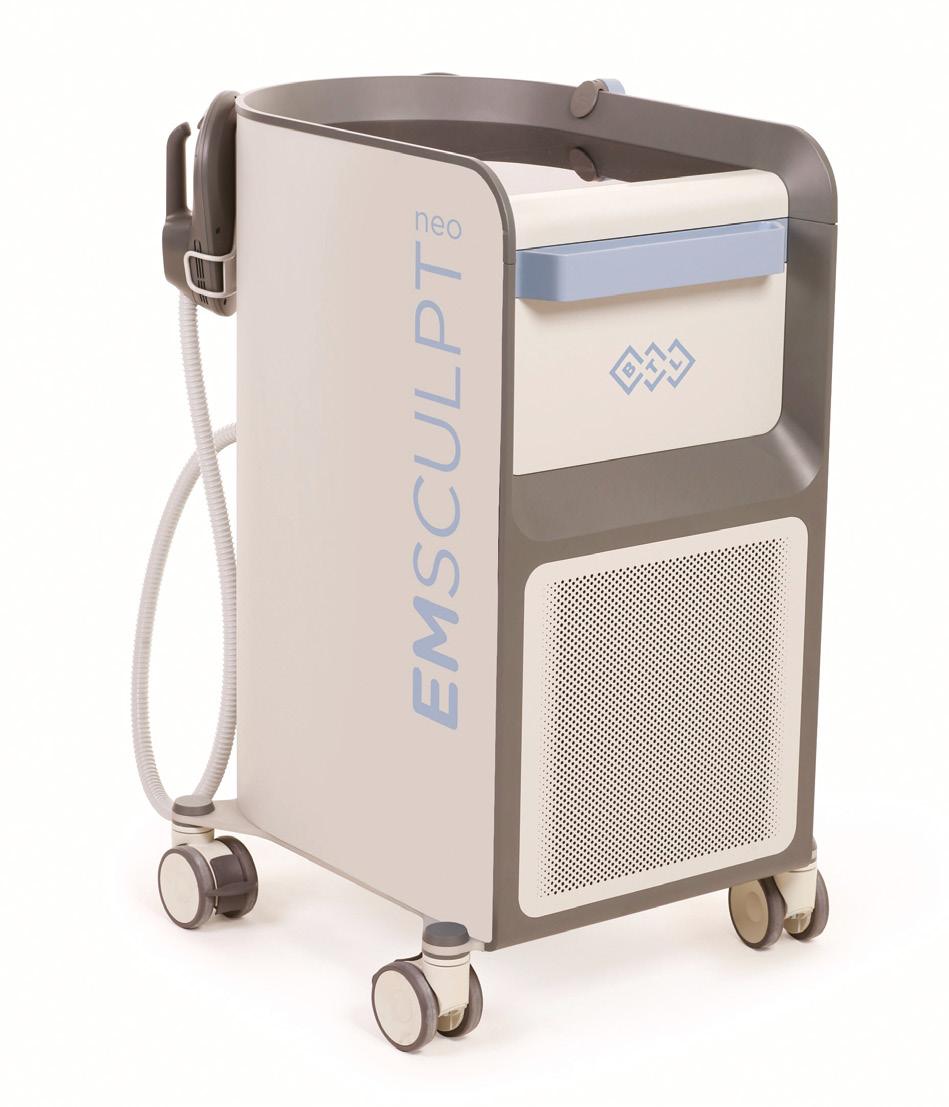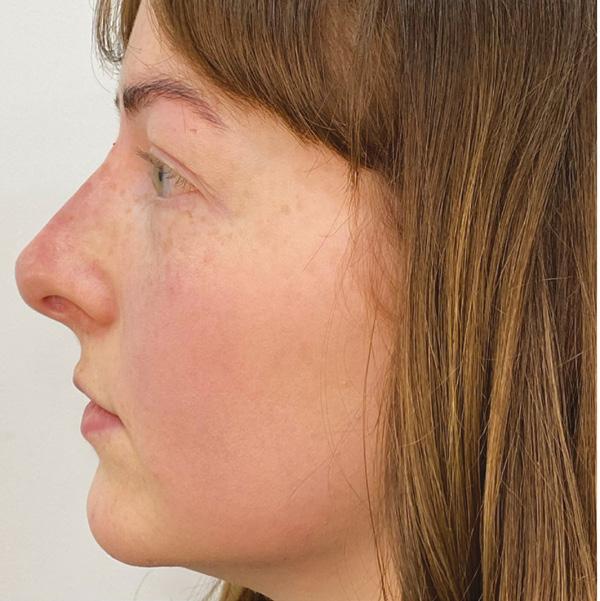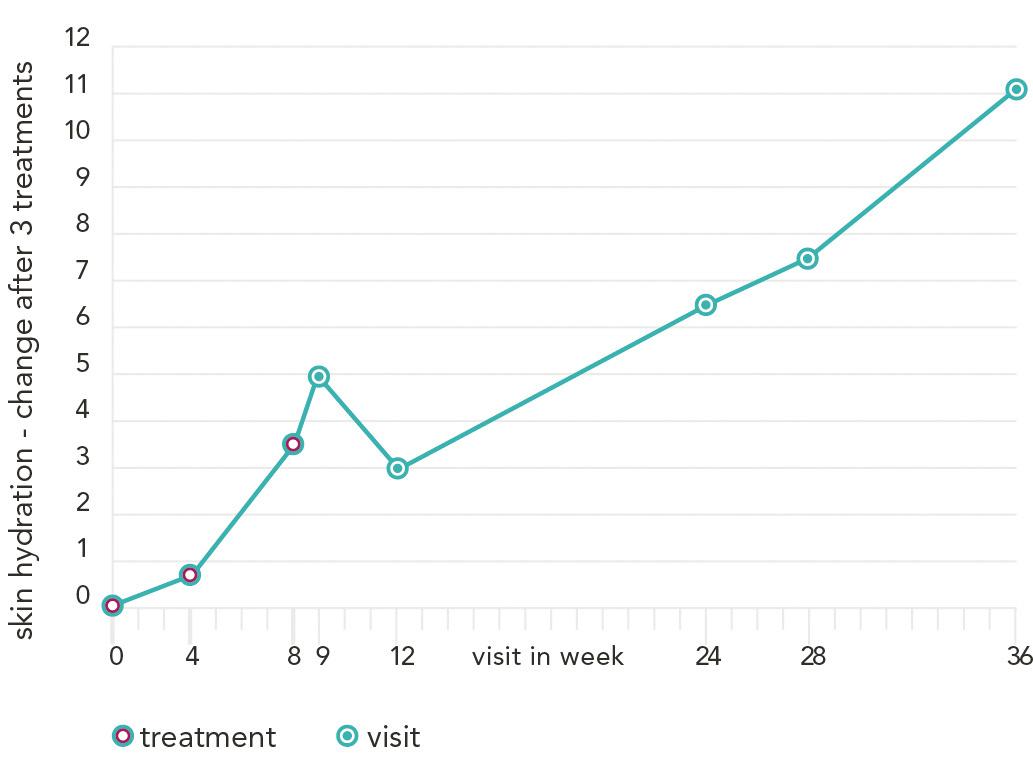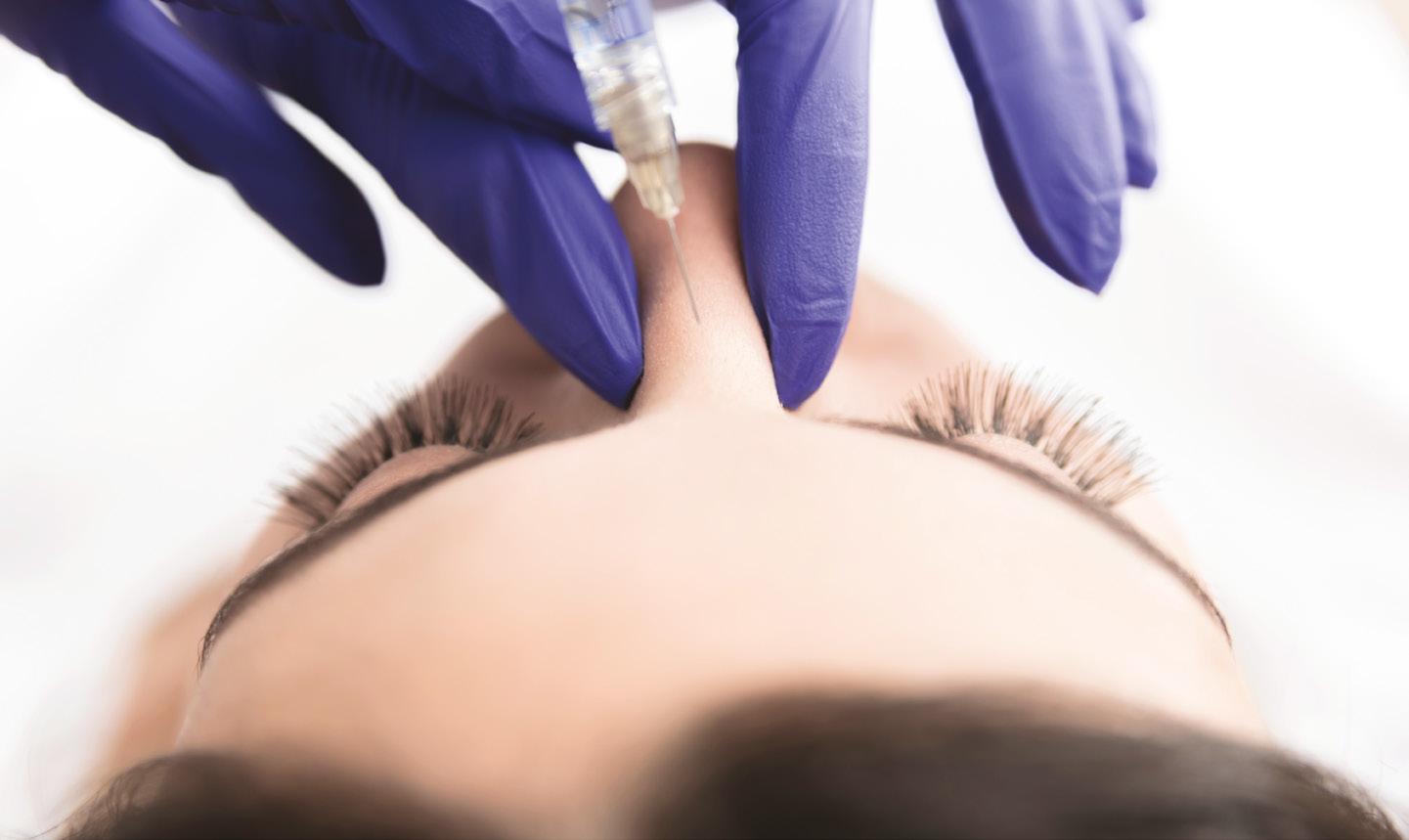@aestheticsgroup
@aestheticsjournaluk
Aesthetics
aestheticsjournal.com
circulation, disability, exposure (ABCDE) approach with a critically ill patient. This allowed me to methodically make my assessment of my patient’s CRT and identify the arterial pathway that had been impacted. Below, I outline what I believe to be the prerequisites for making a calm assessment. Sound knowledge in facial anatomy I have undertaken many practical in-depth injectable and facial anatomy training courses and I have further supplemented my knowledge using online resources. As a visual learner, I found viewing the anatomy on a cadaver particularly helpful, consolidating my theoretical knowledge with a more threedimensional understanding.5
Emotionally Dealing With a VO Dr Sharan Uppal advises on how to stay calm and take care of your mental health after causing a vascular occlusion In 2020, after six years of aesthetic practice, I caused my first vascular occlusion (VO) during a hyaluronic acid dermal filler treatment. I had planned to address multiple facial areas, with the goal of achieving a rejuvenated, fresh-faced look. I began by treating both the patient’s temples with a needle to periosteum approach, 1cm along and down from the temporal fusion line (aspirations were negative). Following this, I wanted to create more seamless transitions, so used a cannula, entering over the zygoma to treat the lateral orbital fat compartment. Aspirations with a 25 gauge cannula were all negative too. The whole treated area looked perfect, with normal skin colouration and my patient was comfortable throughout. It was only as I retracted my cannula to remove it that an immediate swelling appeared just lateral to the tail of the brow, which I recognised to be a haematoma. I then noted pallor over this area and at the superior aspect of her forehead, just below the frontal hairline (nowhere near where I’d treated). I realised, from the geographical pathway of pallor, that I was dealing with an occlusion of the superficial temporal artery and one of its smaller branches.1 In retrospect, it was
most likely caused by my cannula having impaled a vessel en route to my treatment area, providing a path for the filler to enter an artery.2 Then the retraction of the cannula, at the end of treatment, allowed the previously impaled area to bleed (hence the haematoma). Only moments passed between the above signs and my next assessment, finding a delayed capillary refill time (CRT) of five seconds over the territory of the supraorbital artery.3 I knew what could happen next if there was further tracking of the filler emboli: the potential for blindness!4 I diagnosed and dealt with what I was seeing immediately, using hyaluronidase, as per my emergency reversal protocol.5 Thankfully, my patient had a good outcome, with no necrotic or visual sequelae. However, the week following the VO was definitely up there as being one of the more stressful weeks of my life. I imagine any clinician who has dealt with this type of complication, regardless of their level of experience, will be able to resonate with this.
Keeping calm After my initial shock, a surprising calmness followed. I can only liken it to the mode we go into when applying an airway, breathing,
Complications training I regularly refresh my knowledge in how to recognise and manage a VO. There are many great resources available to aesthetic clinicians, and I have attended a comprehensive complications training course and regularly review online training resources. Emergency kit and guidelines Your emergency kit and guidelines should be in an easy to access location. The very simple step of ensuring emergency drugs are in stock and in date makes a significant difference to one’s state of mind, and the clinical outcome when dealing with a complication.6 Complication acknowledgment A willingness to acknowledge a complication may have occurred is vital. We all have that little voice that wants us to bury our head in the sand and hope everything will sort itself out. That voice tends to be louder when we do not know how to handle a situation, risking one passing off findings as the result of a more minor inconvenience. Patient communication As per the General Medical Council guidelines, you should communicate openly and honestly with your patient.7 This begins during the initial consultation; for this patient I had explained the side effects and risks that can occur during and after a dermal filler procedure, using non-medical jargon and checked my patient’s understanding to ensure informed consent.8 This essential pre-requisite allows for easier explanation if a complication does later follow and also helps protect you medico-legally.
Reproduced from Aesthetics | Volume 8/Issue 8 - July 2021





















